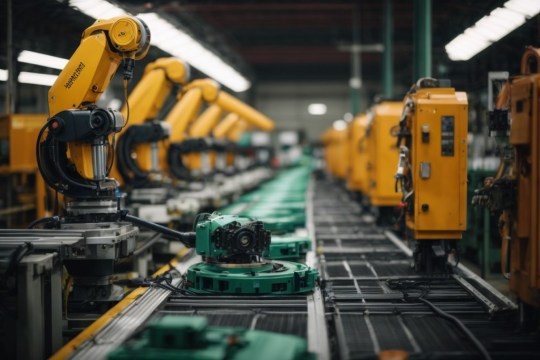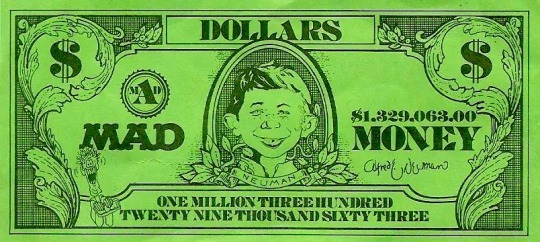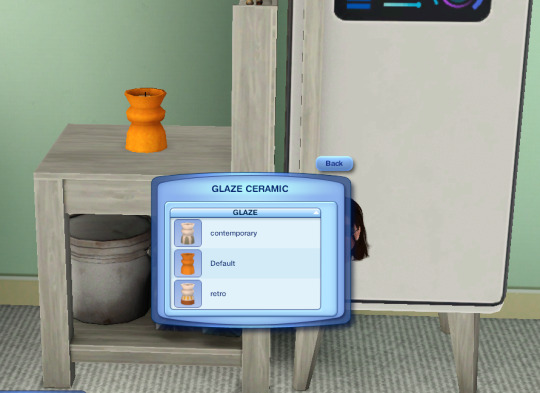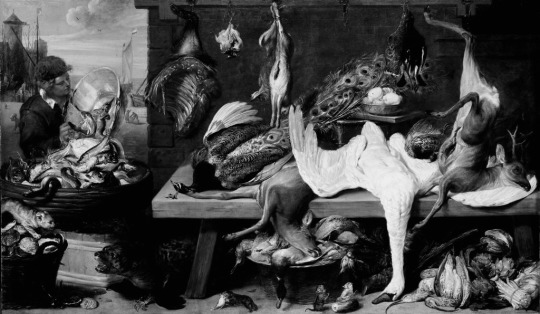#Automated Typing Technology
Explore tagged Tumblr posts
Text
youtube
Hii Everyone! I Hope all are doing well
Medical Insurance Auto-Fill Software is a specialized tool designed to streamline and automate the process of filling out medical insurance claim forms and related documentation. The software is developed to enhance efficiency, reduce errors, and save time.
Implementing Medical Insurance Auto-Fill Software can contribute to a more streamlined and accurate claims submission process, reducing the administrative burden on data entry works
Thank you for watching, hope our video may helps you, for more helpful videos and relatable video please subscribe our channel, do share , follow and like the video.
#Medical Insurance Auto-Fill Software#Efficient Medical Form Automation Tools#Auto-Typing Software#Automated Form Filling#Data Entry Automation#Smart Form Completion#Automatic Data Input#Efficient Form Processing#Keyboard Automation Tools#Typing Automation Software#Form Auto-Fill Solutions#Data Entry Efficiency Tools#Automated Typing Technology#Form Filling Automation Software#Efficiency Software Solutions#Auto-Complete Software#Automated Form Submission#Youtube
0 notes
Text
do you think there is any elitism regarding tattoo application in cyberpunk? cause we see v's tattoo being applied automatically by a ripperdoc but i have to assume that tattoo artist is still a job, if even a dying one that's slowly being replaced by machines. like even today we see artists fighting for their work and the integrity of art in general versus ai, and i know in the tattoo community there have been similar things happening re: robotics/automated application within the last few years (look up BlackDot tattoo) and i just want to know what that community is like in 2077. there must still be old school corner tattoo shops right??
#cyberpunk 2077#genuinely dont know if there is any lore about this anywhere#but i was thinking about dagger's tattoos last night and how i just don't see him sitting down and letting a machine#apply his ink lmao. he's got several stick n pokes and for certain his chin tattoo was done by hand#but hes just such an old school type of person with an aversion to technology i don't think he'd want it done by an automated machine#i also have a tattoo artist oc who works out of a shop by hand and i just like. how common is that?????#did machines successfully choke out the artistry????#and do all ripperdocs have tattoo application knowledge as a baseline now because it just merged into that instead?#or is that specifically just the case with that dude who does v's tattoo whose name i don't rmr now cassius or whatever#and this doesn't even begin to touch on tattoos that have some kind of ingrained tech feature too...light up/glow in the dark#what does that tyger claw tattoo thing do its been too long since i played through rip#why is THERE SO MUCH TO THINK ABOUT???? HELLO?????????
38 notes
·
View notes
Text
me: ok, I went to the bathroom and now it's time to go back to sleep!
my brain: hey. hey. FNAF security breach is basically the same as the fallout new vegas dead money dlc
me:

#no i woll not elaborate#actually i will#you get trapped in a location that was meant to be an entertainment venue#you have to avoid traps and dangerous enemies as you follow your objectives given to you by someone who has intimate knowledge#of said location#the technology inside this venue is incredibly advanced and almost entirely automated#the mastermind behind the whole thing is APPARENTLY a guy that everyone thought was already dead#(or maybe not im still unclear if burntrap a d by extension glitch trap is actually william afton)#you can stun the enemies but you cant kill them using normal methods#im sure theres more here to compaw them with but im sick of typing#ham.txt#fnaf#fallout new vegas#dead money
4 notes
·
View notes
Text
OMG 🔥🔥🔥 Now you can make videos just by typing | सिर्फ टाइप कर के विडियो बनायें आसानी से | AI Watch video on TECH ALERT yt https://youtu.be/Vh55_NQLjBE
#techalert #howto #windows #technology #technical #games #gaming #onlinegaming #slowroads #tipsandtricks #tricks #free #love #audio #video #instagram #fbreels #reelsfb #installation #virals #trend #trendingreels #AI #videos #aitools #aivideoart #Automation
#OMG 🔥🔥🔥 Now you can make videos just by typing | सिर्फ टाइप कर के विडियो बनायें आसानी से | AI#Watch video on TECH ALERT yt#https://youtu.be/Vh55_NQLjBE#techalert#howto#windows#technology#technical#games#gaming#onlinegaming#slowroads#tipsandtricks#tricks#free#love#audio#video#instagram#fbreels#reelsfb#installation#virals#trend#trendingreels#AI#videos#aitools#aivideoart#Automation
2 notes
·
View notes
Text
The Backbone of Construction: A Deep Dive into Construction Equipment
When you pass by a construction site, what catches your eye? It’s not just the towering structures or the bustling workers; it’s the array of heavy machinery and equipment that makes the entire process possible. Construction equipment serves as the backbone of any construction project, enabling the realization of architectural marvels and infrastructural development. In this article, we will take…

View On WordPress
#advanced construction equipment#bulldozers#Construction Equipment#construction equipment automation#construction equipment evolution#construction equipment future#construction equipment safety#construction equipment significance#construction equipment trends#construction equipment types#construction industry#construction machinery#construction site equipment#Construction Technology#construction tools#construction vehicles#cranes#earthmoving equipment#environmental impact#equipment for construction#equipment types#excavators#heavy machinery#material handling equipment#precision machinery#Sustainable Construction
3 notes
·
View notes
Text
Embracing the Future: Dreame's Robot Vacuums
Hi everyone,
I'm excited to share my thoughts on the amazing advancements in the smart home industry, particularly highlighting the innovative brand Dreame and their incredible line of robot vacuums. As we all strive for a more convenient and efficient lifestyle, Dreame has truly stepped up to the plate.
Dreame's robot vacuums are not just about cleaning; they represent a leap towards a smarter home. With advanced features like powerful suction, smart mapping, and app control, these vacuums make maintaining a clean home easier than ever. They can navigate through your space, avoid obstacles, and even return to their charging station when needed.
I’ve been using a Dreame robot vacuum for a few months now, and I can confidently say it has transformed my cleaning routine. The convenience of scheduling cleanings through my phone while I focus on other tasks has been a game changer. Plus, they are designed to tackle various floor types, ensuring a thorough clean every time.
For anyone considering a smart vacuum, I highly recommend checking out Dreame. Their commitment to quality and user-friendly technology truly sets them apart in the realm of robot vacuums.
What are your experiences with smart vacuums? Have you found any brands that you love? Let’s share our thoughts!
Thanks for reading!
0 notes
Text
you know even if there are flying saucers and shit we have no reason to believe theyre intelligent. not even 'NOPE' style 'its a animals' type stuff like the aliens might actually just be morons. Think of it this way: "you" are traveling for thousands of years, looking for resources. You're the 900th clone in a sequence, built by a system that claims it cannot fail. You are a product of hubris affected by entropy- something humans sometimes think is unique to our planet- and the technology your ancestors built for you has degraded and rotten to the point where you're more of an organ for the saucer than an intergalactic explorer. It still works, of course- you and the 1000 or so travelers beside you in the void are all alive and healthy, routinely reproduced by your ships when the previous iteration croaks. But you made to be perfection. The idea of a flaw in this system was inconceivable. You have never learned anything for yourself. Your memories are inherited from the previous iteration of "you-" but that version was just a little bit more whole, a little bit closer to what it was when a real Lil' Pleebnar was born on Plibbum 6. You're a copy of a copy of a thousand copies born with knowledge of what the buttons in front of you do- you were engineered to have perfect eidetic memory, but trivial things like 'philosophy' and 'first contact rituals' have long since left your mind. You didn't need them during the journey. The very, very long journey. Now you're on earth- well, above it. You've not had the threat of learning something in millennia, and the sights and sounds of the little blue orb beneath you terrify you and your flock. You would dust off old language protocols- if you remembered what language was. Your ship- the vessel that now works as a shell, protecting your stupid little grey meat, stirs. It automates scouting rituals and initiates an information gathering campaign to send back to a motherworld that no longer knows you. An information campaign learning nothing at all. A New Jersian throws a bottle at your craft. You shit yourself in fear.
4K notes
·
View notes
Text
#pressure sensor#sensors#instrumentation#measurement#engineering#technology#physics#electronics#industrial automation#process control#manufacturing#automation#IoT#smart devices#smart homes#smart cities#data analytics#data science#machine learning#artificial intelligence#automation technology#industrial automation systems#process automation#manufacturing automation#sensor technology#pressure measurement#sensor types#pressure sensor types#diaphragm pressure sensor#strain gauge pressure sensor
0 notes
Text
Useful Tips for Becoming a Successful Agriculture Investor
Agriculture investment refers to the allocation of financial resources, capital, or assets into various aspects of the agricultural sector with the expectation of generating a return on investment (ROI). This could mean investing monies in agriculture land for sale such as coconut land for sale in Sri Lanka, or other types of investments. It involves deploying funds in activities and projects related to agriculture for the purpose of profit, income generation, or long-term wealth creation. Agriculture investment can take many forms, including:
Farmland Acquisition: Purchasing agricultural land for the cultivation of crops or the raising of livestock. This can involve both large-scale and small-scale farming operations.
Infrastructure Development: Investing in the construction and improvement of infrastructure such as irrigation systems, roads, storage facilities, and processing plants to enhance agricultural productivity and efficiency.
Technological Advancements: Funding the development and adoption of agricultural technologies, such as precision agriculture, automation, and biotechnology, to improve crop yields and reduce operational costs.
Agribusiness Ventures: Investing in agribusinesses, such as food processing, distribution, and marketing, that are part of the agricultural value chain.
Research and Development: Supporting research initiatives related to agriculture to develop new crop varieties, pest-resistant strains, and sustainable farming practices.
Input Supply: Investing in the production and distribution of agricultural inputs like seeds, fertilisers, pesticides, and machinery.
Commodity Trading: Speculating on the future prices of agricultural commodities, such as grains, oilseeds, and livestock, through commodity markets or futures contracts.
Sustainable Agriculture: Funding practices and projects aimed at sustainable and environmentally responsible farming methods, which can include organic farming, agroforestry, and conservation efforts.
Rural Development: Supporting initiatives that improve the overall economic and social well-being of rural communities, often through investments in education, healthcare, and infrastructure.
Venture Capital and Start-ups: Investing in start-ups and companies focused on innovations in agriculture, such as vertical farming, aquaculture, or agricultural technology (AgTech).
Agriculture investment is important for food security, economic development, and job creation in many regions. However, it also comes with risks related to weather conditions, commodity price fluctuations, and market dynamics. Investors often conduct thorough research and risk assessments before committing their resources to agricultural ventures. Additionally, they may need to consider factors like government policies, environmental regulations, and social impacts on their investment decisions in the agricultural sector.
How to become a successful agriculture investor
Becoming a successful agriculture investor requires a combination of financial acumen, agricultural knowledge, and a strategic approach to investment. Here are some steps to help you become a successful agriculture investor:
Educate Yourself: Gain a strong understanding of the agricultural sector, including the different sub-sectors (crops, livestock, agribusiness, etc.). Stay updated on industry trends, market conditions, and emerging technologies.
Set Clear Investment Goals: Define your investment objectives, whether it is long-term wealth creation, income generation, or diversification of your investment portfolio.
Risk Assessment: Understand and assess the risks associated with agriculture investments, such as weather-related risks, market volatility, and regulatory changes, whether you are looking at land for sale or any other type of investment.
Develop a Diversified Portfolio: Diversify your investments across different agricultural sectors and geographic regions to spread risk.
Market Research: Conduct thorough market research to identify promising investment opportunities and potential demand for agricultural products.
Build a Network: Establish connections with farmers, agricultural experts, government agencies, and industry stakeholders who can provide insights and opportunities.
Financial Planning: Create a budget and financial plan that outlines your investment capital, expected returns, and cash flow requirements.
Select the Right Investment Type: Choose the type of agriculture investment that aligns with your goals, whether it is farmland, agribusiness ventures, or agricultural technology.
Due Diligence: Conduct comprehensive due diligence on potential investments, including assessing the quality of farmland, the financial health of agribusinesses, and the technology's potential for scalability and profitability.
Sustainable Practices: Consider investments in sustainable and environmentally responsible agriculture practices, as they are gaining importance in the industry.
Risk Management: Implement risk management strategies, such as insurance, to protect your investments from unforeseen events like natural disasters or crop failures.
Continuous Learning: Stay informed about changes in the agricultural industry and adapt your investment strategy accordingly.
Legal and Regulatory Compliance: Understand and comply with local, national, and international regulations and tax laws that may impact your agriculture investments.
Monitor and Adjust: Regularly review the performance of your investments and be prepared to make adjustments or exit underperforming ones.
Long-Term Perspective: Agriculture investments often require a long-term perspective, so be patient and avoid making impulsive decisions based on short-term market fluctuations.
Seek Professional Advice: Consult with financial advisors, agricultural experts, and legal professionals to ensure that your investments are structured and managed effectively.
Successful agriculture investment often involves a mix of financial expertise, industry knowledge, and a willingness to adapt to changing conditions. It is important to approach agriculture investment with a well-thought-out strategy, and to be prepared for both opportunities and challenges in this sector.
#Agriculture investment refers to the allocation of financial resources#capital#or assets into various aspects of the agricultural sector with the expectation of generating a return on investment (ROI). This could mean#or other types of investments. It involves deploying funds in activities and projects related to agriculture for the purpose of profit#income generation#or long-term wealth creation. Agriculture investment can take many forms#including:#●#Farmland Acquisition: Purchasing agricultural land for the cultivation of crops or the raising of livestock. This can involve both large-sc#Infrastructure Development: Investing in the construction and improvement of infrastructure such as irrigation systems#roads#storage facilities#and processing plants to enhance agricultural productivity and efficiency.#Technological Advancements: Funding the development and adoption of agricultural technologies#such as precision agriculture#automation#and biotechnology#to improve crop yields and reduce operational costs.#Agribusiness Ventures: Investing in agribusinesses#such as food processing#distribution#and marketing#that are part of the agricultural value chain.#Research and Development: Supporting research initiatives related to agriculture to develop new crop varieties#pest-resistant strains#and sustainable farming practices.#Input Supply: Investing in the production and distribution of agricultural inputs like seeds#fertilisers#pesticides#and machinery.
1 note
·
View note
Text
Unlocking the Future of Robotics: A Journey through Innovation and Applications
Introduction to Robotics: Welcome to the exciting world of robotics, where cutting-edge technology and innovation are shaping the future in unimaginable ways. In this blog post, we’ll take you on a journey through the evolution of robotics and the diverse applications that have emerged in recent years. Historical Focus on Industrial Robotics Applications in Assembling, Welding, and Material…

View On WordPress
#Advanced Robotics#AI in Robotics#Emerging Robot Types#Future of Robotics#Humanoid Robots#Industrial Robotics#Robot Advantages#Robot Applications#Robot Automation#Robot Efficiency#Robot Technology#Robotics#Robotics for Complex Tasks#Robotics in Healthcare#Robotics in Industry#Robotics in Manufacturing#Robotics Innovation#Robotics Trends#Service Robots#Technological Advancements in Robotics
0 notes
Text
youtube
OMG 🔥🔥🔥 Now you can make videos just by typing | सिर्फ टाइप कर के विडियो बनायें आसानी से | AI Watch video on TECH ALERT yt https://youtu.be/Vh55_NQLjBE
#techalert #howto #windows #technology #technical #games #gaming #onlinegaming #slowroads #tipsandtricks #tricks #free #love #audio #video #instagram #fbreels #reelsfb #installation #virals #trend #trendingreels #AI #videos #aitools #aivideoart #Automation
#OMG 🔥🔥🔥 Now you can make videos just by typing | सिर्फ टाइप कर के विडियो बनायें आसानी से | AI#Watch video on TECH ALERT yt#https://youtu.be/Vh55_NQLjBE#techalert#howto#windows#technology#technical#games#gaming#onlinegaming#slowroads#tipsandtricks#tricks#free#love#audio#video#instagram#fbreels#reelsfb#installation#virals#trend#trendingreels#AI#videos#aitools#aivideoart#Automation
2 notes
·
View notes
Note
Setting aside the copyright discourse for a minute, what do you think is the real, actual wrong with ai? From what I can tell you're anti genAI but in a more rational way rather than going on personal vibes. I've mostly seen defensive posts about ai so I'm curious what you think are the actual harms we should be advocating against
have talked about this here. in general i think the most pressing things that are actually worth caring wrt genAI about are labour issues, both in the training of these models and in how they (like any meaningful advance in technology) are integrated into workflows in a way that immiserates workers (for example, attempts to turn writing credits into 'editing credits' by having writers work with AI-generated scripts that the WGA managed to put an end to). & i think the way to fight these things is, as i often repeat, through industrial collective action and not through yelling at people for generating 'mcdonalds simpsons porn room' lol
when it comes to other types of AI, i think that their role in essentially automating war crimes and providing clumsy cover for what are fundamentally indiscriminate massacres is also obviously deeply evil, but has less to do with any actual feature of the technology itself and more to do with its marketing -- this is the "AI"-as-social-object vs. generative LLM distinction i think people are bad at making. like, i don't think that "we need to bomb this family home because the computer said so" is fundamentally different to its analog version, "we're renditioning you to a concentration camp because our chart said so". the important technology here is the imposition of the aesthetic of technocratic managerialism over nakedly arbitrary violence and cruelty, not anything that the AI is doing per se.
859 notes
·
View notes
Text

MAD MONEY
(story originally published in Mental Floss magazine)
MAD magazine has always prided itself on being a subversive, counter-culture presence. Since its founding in 1952, many celebrated comedians have credited the publication with forming their irreverent sense of humor, and scholars have noted that it has regularly served as a primer for young readers on how to question authority. That attitude frequently brought the magazine to the attention of the FBI, who kept a file on its numerous perceived infractions—like offering readers a "draft dodger" card or providing tips on writing an effective extortion letter.
The magazine's "Usual Gang of Idiots" outdid themselves in late 1967, though, when issue #115 featured what was clearly a phony depiction of U.S. currency. In addition to being valued at $3—a denomination unrecognized by the government—it featured the dim-witted face of MAD mascot Alfred E. Neuman.

When taken at its moronic face value, there was absolutely no way anyone with any sense could have confused the bill for actual money. But what MAD hadn't accounted for was that a machine might do exactly that. Around the time of the issue's release, automated coin change machines were beginning to pop up around the country. Used in laundromats, casinos, and other places where someone needed coins rather than bills, people would feed their dollars into the unit and receive an equal amount of change in return.
At that time, these machines were not terribly sophisticated. And as a few enterprising types discovered, they didn't have the technology to really tell Alfred E. Neuman's face from George Washington's. In Las Vegas and Texas, coin unit operators were dismayed to discover that people had been feeding the phony MAD bill into the slots and getting actual money in return.
How frequently this happened isn't detailed in any source we could locate. But in 1995, MAD editor Al Feldstein, who guided the publication from its origins as a slim comic book to netting 2.7 million readers per issue, told The Comics Journal that it was enough to warrant a visit from the U.S. Treasury Department.
"We had published a three-dollar bill as some part of an article in the early days of MAD, and it was working in these new change machines which weren't as sensitive as they are now, and they only read the face," Feldstein said. "They didn't read the back. [The Treasury Department] demanded the artwork and said it was counterfeit money. So Bill [Gaines, the publisher] thought this whole thing was ridiculous, but here, take it, here's a printing of a three-dollar bill."
Feldstein went on to say that the government employees demanded the "printing plates" for the bill, but the magazine had already disposed of them. The entire experience, Feldstein said, was "unbelievable."
The visit didn't entirely discourage the magazine from trafficking in fake currency. In 1979, a MAD board game featured a $1,329,063 bill.

A few decades later, a "twe" (three) dollar bill was circulated as a promotional item. The bills were slightly smaller than the dimensions of actual money—just in case anyone thought a depiction of Alfred E. Neuman's gap-toothed portrait was evidence of valid U.S. currency.
362 notes
·
View notes
Text
I just... Really hate all the techbros who are saying shit like "hey artists you better watch your days, we'll automate creativity and then its over for you guys!", not just for the obvious reason of how fucked up that world view is, but because it's heavily souring my genuine childlike wonder at how cool this technology is.
Like, take a step back, forget all the discourse we've been forced to have, and just think. We can tell a robot "gender reveal 9/11" and it can make an image of blue and pink exploding towers. That on its own is fucking insane?
And the actual like, algorithms and math that went into it too! We make robots that teach robots to teach themselves how to do stuff. Then just stick that shit in the microwave for a while and boom. Or just tell it "Here's the sum of all knowledge on earth, figure it out".
And I especially love those early AI generated images where any time you try and focus on something it falls apart, but it almost makes sense when you see if from the corner of your eye. That type of image, I don't know how to describe it fully, but it makes me think of when I'm trying to remember a dream as it's fading away in my head.
And these FUCKING chucklefucks decide "hey, let's use this cool as fuck technology in the worst possible way. let's get rid of those pesky people making a living doing what they love and get those shmucks back in an office building so they can get a real job. i'm going to be an asshole about it online and also pay $8 a month so maybe elon musk will notice me"
I'm so fucking tired, man. I want to be excited about new technology and shit but I just can't at this stage.
2K notes
·
View notes
Text
WIP Update (Pottery Mod etc.)
Heyo, figured I'd give an update on my WIPs, especially as I mentioned previously about making a post about the pottery mod and proceeded to not do that...
Long story short, I had to take a break from working on the pottery mod for a little while, then I didn't pick it back up when I could, became afraid to look at it, started other WIPs including a cow mod and a script modding tutorial project, and now am working on a project tangential to the pottery mod - a material state editor tool! I'm pretty excited about it because I'm diving into using S3PI and I'm honestly just surprised it's working out so far. This tool should make it less tedious to add all the glaze types to the ceramics for the pottery mod, and maybe someone else will find it useful too! At least my future self will if I make another mod that involves objects with material states... otherwise it's me spending 50 hours working on a tool to automate something that might take 5 hours! Yay technology...! I'm also hoping this post will help get me back into working on the pottery mod itself... I already had to fix a problem I so kindly left for myself in the code before I stopped working on it, in order to finish getting the screenshots, so that's good?
Anyway here is an overview of the pottery mod so far, and my plans for it:
Interaction
I have a Make Ceramic interaction, with the converted sims 4 pottery wheel, where you can pick the ceramic to make and the sim will sit at the wheel, and make it! I still have more animations to convert but I might not do all of them for simplicity's sake.
Skill
Currently just have a basic pottery skill, which will determine which items your sim can make, but I could add a couple of skill stats and maybe challenges.
Objects
I've also made some progress on converting the sims 4 pottery objects, but it will also be easy to add other objects to the XML file if you want.
Glazing
I also have an XML set up for selectable glazes, so you can pick in game which sims 4 glaze you want for the sims 4 objects, as well as a default one which will be fully CAStable. It's therefore possible to add selectable glazes to other objects, but you'll need to be comfortable adding the textures as material states rather than regular presets. But CASt has you covered anyway :p
Kiln
The kiln object is where you finish the ceramics, either choosing a sims 4 glaze or a normal CAStable version. Sims 4 has the kiln process be almost instant, but I have it so the ceramic will take a few hours to finish and your sim can come and pick it up later - like the nectar machine from WA.
Still to do:
Finish converting the sims 4 ceramics
Set up the glazes for them
Add more pottery animations
Skill improvements
Add sounds to wheel and kiln
Mod in action:





116 notes
·
View notes
Text
economic advice and timely buying tips: 2025 transits
as of late, social media has many discussions about what to buy - or avoid buying - over the next few years, largely in response to the political climate in the united states. across europe, many regions are actively preparing their populations for potential crises (sweden's seems to be the most popularly discussed - link). due to the urgency and pressure to act, as if the world might change tomorrow (and it could though i believe we still have time in many places), i’ve decided to analyze the astrological transits for 2025. in this post i provide practical economic advice and guidance on how much time astrology suggests you have to make these purchases everyone is urging you to prioritize. if it seems to intrigue people i’ll explore future years as well.
things the world needs to prepare for in 2025 in my opinion and why my advice is what it is: the rise of ai / automation of jobs, job loss, geopolitical tensions, war, extreme weather, inflation, tariffs - a potential trade war, a movement of using digital currency, the outbreak of another illness, etc.
paid reading options: astrology menu & cartomancy menu
enjoy my work? help me continue creating by tipping on ko-fi or paypal. your support keeps the magic alive!

uranus goes direct in taurus (jan 30, 2025)
advice
diversify investments: avoid putting all your money in one asset type. mix stocks, bonds, index funds, and, if you feel comfortable, look into sustainable investments or new technologies.
digital finance: familiarize yourself with digital currencies/platforms or blockchain technology.
build an emergency fund: extra savings can shield you from sudden economic instability. aim for 3-6 months’ worth of expenses.
reevaluate subscriptions and spending: find creative ways to reduce spending or repurpose what you have. cancel subscriptions that don't align with needs/beliefs, cook at home, or diy where possible.
invest in skills / side hustles: take a course/invest in tools that can help you create multiple income streams.
by this date stock up on
non-perishable food items like canned goods, grains, and dried beans. household essentials like soap, toothpaste, and cleaning supplies. basic medical supplies. multi-tools. durable, high-quality items over disposable ones (the economy is changing, buy something that will last because prices will go up). LED bulbs, solar-powered chargers, or energy-efficient appliances. stock up on sustainable products, like reusable bags and water bottles. blankets. teas. quality skincare.
jupiter goes direct in gemini (feb 4, 2025)
advice
invest in knowledge: take courses, buy books (potential bans?), and/or attend workshops to expand your skill set. focus on topics like communication, writing, marketing, and/or technology. online certifications could boost your career prospects during this time.
leverage your network: attending professional events, joining forums, and/or expanding your LinkedIn presence.
diversify income streams: explore side hustles, freelance gigs, and/or monetize hobbies.
beware of overspending on small pleasures: overspending on gadgets, books, or entertainment will not be good at this point in time (tariffs already heavy hitting?).
by this date stock up on
books / journals. subscriptions to learning platforms like Skillshare, MasterClass, or Coursera. good-quality laptop, smartphone, and/or noise-canceling headphones. travel bags - get your bug out bag in order. portable chargers. language-learning apps. professional attire. teas. aromatherapy.
neptune enters aries (march 30, 2025)
advice
invest: look into industries poised for breakthrough developments, such as renewable energy, space exploration, and/or tech.
save for risks: build a financial cushion to balance your adventurous pursuits with practical security.
diversify your income: consider side hustles or freelancing in fields aligned with your passions and talents.
"scam likely": avoid “get-rich-quick” schemes or ventures that seem too good to be true.
adopt sustainable habits: focus on sustainability in your spending, like buying high-quality, long-lasting items instead of cheap, disposable ones.
by this date stock up on
emergency kits with essentials like water, food, and first-aid supplies. multi-tools, solar chargers, or portable power banks. art supplies. tarot or astrology books (bans?). workout gear, resistance bands, or weights. nutritional supplements. high-quality clothing or shoes.
saturn conjunct nn in pisces (april 14, 2025)
advice
save for the long term: create a savings plan or revisit your budget to ensure stability.
avoid escapism spending: avoid unnecessary debt.
watch for financial scams: be cautious with contracts, investments, or loans. research thoroughly and avoid “too good to be true” offers.
focus on debt management: saturn demands accountability. work toward paying down debts to free yourself from unnecessary burdens.
build a career plan: seek roles / opportunities that balance financial security with fulfillment, such as careers in wellness, education, creative arts, or nonprofits.
by this date stock up on
invest in durable, sustainable items for your home or wardrobe that offer long-term value. vitamins or supplements. herbal teas or whole grains. blankets. candles. non-perishable food. first-aid kits. water. energy-efficient devices.
pluto rx in aquarius (may 4, 2025 - oct 13, 2025)
advice
preform an audit: reflect on how your money habits and your long-term goals.
make sustainable investments: support industries tied to innovation, like renewable energy, ethical tech, or sustainable goods.
expect changes: could disrupt collective systems, so build an emergency fund. plan for potential shifts in tech-based industries or automation. AI is going to take over the workforce...
reevaluate subscriptions and digital spending: cut unnecessary costs and ensure your money supports productivity. netflix is not necessary, your groceries are.
diversify income streams: brainstorm side hustles or entrepreneurial ideas.
by this date stock up on
external hard drives. cybersecurity software. portable chargers. solar panels. energy-efficient gadgets. non-perishable food. clean water supplies. basic first-aid kits and medications. portable generators. books on technology and coding. reusable items like water bottles, bags, and food storage. gardening supplies to grow your own food. VPN subscriptions or identity theft protection.
saturn enters aries (may 24, 2025)
advice
prioritize self-reliance: build financial independence. create a budget, eliminate debt, and establish a safety net to support personal ambitions. avoid over-reliance on others for financial stability/decision-making.
entrepreneurship: consider starting a side hustle / investing in yourself.
save for big goals: plan for major life changes, such as buying property, starting a business, etc. make a high yield saving account for these long-term goals.
by this date stock up on
ergonomic office equipment. home gym equipment. non-perishable foods and water supplies for potential unexpected disruptions. self-protection; consider basic tools or training for safety. high-protein snacks, energy bars, or hydration supplies. supplements like magnesium, B-complex vitamins, etc. stock up on materials for DIY projects, hobbies, or entrepreneurial ventures.
jupiter enters cancer (june 9, 2025)
advice
invest in your home: renovating what needs renovating. saving for a down payment on a house.
focus on security: start or increase your emergency savings. consider life insurance or estate planning to ensure long-term security for your family/loved ones.
embrace conservative financial growth: cancer prefers security over risk. opt for conservative investments, like bonds, real estate, and/or mutual funds with steady returns.
focus on food and comfort: spend wisely on food, cooking tools, or skills that promote a healthier, more fulfilling lifestyle (maybe this an RFK thing for my fellow american readers or this could be about the fast food industry suffering from inflation).
by this date stock up on
furniture upgrades if you need them. high-quality cookware or tools. stockpile your pantry staples. first-aid kits, fire extinguishers, and home security systems. water and canned goods for emergencies. paint, tools, or materials for DIY projects. energy-efficient appliances or upgrades to reduce utility costs.
neptune rx in aries/pisces (july 4, 2025 - dec 10, 2025)
advice
avoid financial conflicts: be mindful of shared finances or joint ventures during this time.
avoid escapist spending: stick to a budget.
by this date stock up on
first-aid kits, tools, and essentials for unforeseen events. water filter / waterproof containers. non-perishables and emergency water supplies.
uranus rx in gemini/taurus (july 7, 2025 - feb 3, 2026)
advice
evaluate technology investments: make sure you’re spending money wisely on tech tools, gadgets, or subscriptions. avoid impulsively purchasing the latest gadgets; instead, upgrade only what’s necessary.
diversify streams of income: explore side hustles or gig work to expand your income sources. focus on digital platforms or innovative fields for additional opportunities.
reassess contracts and agreements: take time to revisit financial contracts or business partnerships. ensure all terms are clear and aligned with your goals.
prioritize financial stability: uranus often brings surprises, so focus on strengthening your savings and emergency fund.
avoid major financial risks: uranus retrograde can disrupt markets. avoid speculative ventures and focus on stable, low-risk options.
by this date stock up on
lightweight travel gear or items for local trips. radios, power banks, or portable hotspots in case of disruptions in digital connectivity. stockpile food, water, and household goods to maintain stability during potential disruptions. invest in high-quality, long-lasting items like tools, clothing, or cookware.
saturn rx in aries/pisces (july 13, 2025 - nov 27, 2025)
advice
review career: assess whether your current job or entrepreneurial efforts align with your long-term aspirations (especially considering the state of the world). adjust plans if needed.
strengthen emergency funds: aries energy thrives on readiness. use this time to build/bolster a financial safety net for unforeseen events.
prepare for uncertainty: build a cushion for unexpected financial changes, especially if you work in creative, spiritual, or service-oriented fields.
by this date stock up on
health products that support long-term well-being. essential supplies like first-aid kits, multi-tools, or non-perishables. bath products. teas. art supplies. drinking water or water filtration tools.
jupiter rx in cancer (nov 11, 2025 - march 10, 2026)
advice
strengthen financial foundations: building an emergency fund or reassessing your savings strategy. ensure everything is well-organized and sustainable.
by this date stock up on
quality kitchenware, tools, or cleaning supplies. pantry staples and emergency food supplies.
have ideas for new content? please use my “suggest a post topic” button!
return to nox's guide to metaphysics
return to the masterlist of transits
© a-d-nox 2024 all rights reserved
#astrology#astro community#astro placements#astro chart#astrology tumblr#astro notes#astrology chart#astrology readings#astro#astrology signs#astro observations#astroblr#astrology blog#astrology stuff#natal astrology#transit astrology#transit chart#astrology transits
104 notes
·
View notes